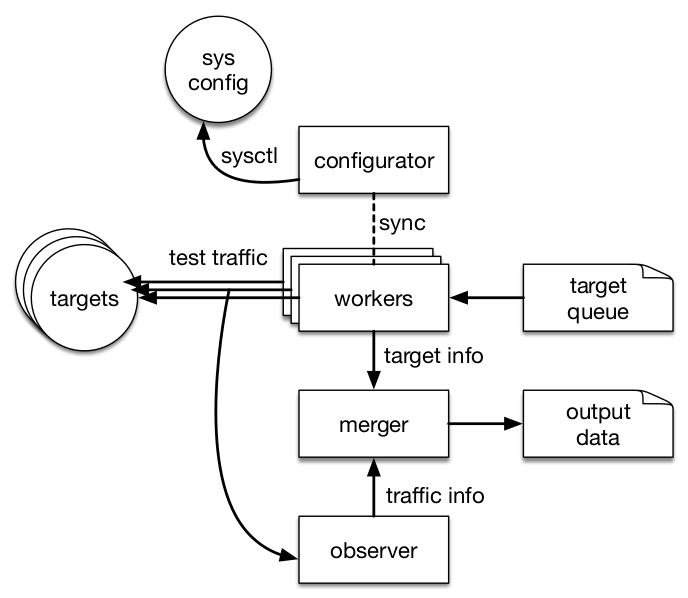Architecture¶
The PATHspider architecture has four components, illustrated in
the diagram below: the configurator, the workers, the observer and the merger. Each component is implemented as one or more
threads, launched when PATHspider starts.
For each target hostname and/or address, with port numbers where appropriate, PATHspider enqueues a job, to be distributed amongst the worker threads when available. Each worker performs one connection with the “A” configuration and one connection with the “B” configuration. The “A” configuration will always be connected first and serves as the base line measurement, followed by the “B” configuration. This allows detection of hosts that do not respond rather than failing as a result of using a particular transport protocol or extension. These sockets remain open for a post-connection operation.
Some transport options require a system-wide parameter change, for example enabling ECN in the Linux kernel. This requires locking and synchronisation. Using semaphores, the configurator waits for each worker to complete an operation and then changes the state to perform the next batch of operations. This process cycles continually until no more jobs remain. In a typical experiment, multiple workers (on the order of hundreds) are active, since much of the time in a connection test is spent waiting for an answer for the target or a timeout to fire.
In addition, packets are separately captured for analysis by the observer using Python bindings for libtrace. First, the observer assigns each incoming packet to a flow based on the source and destination addresses, as well as the TCP, UDP or SCTP ports when available. The packet and its associated flow are then passed to a function chain. The functions in this chain may be simple functions, such as counting the number of packets or octets seen for a flow, or more complex functions, such as recording the state of flags within packets and analysis based on previously observed packets in the flow. For example, a function may record both an ECN negotiation attempt and whether the host successfully negotiated use of ECN.
A function may alert the observer that a flow should have completed and that the flow information can be matched with the corresponding job record and passed to the merger. The merger extracts the fields needed for a particular measurement campaign from the records produced by the worker and the observer.
